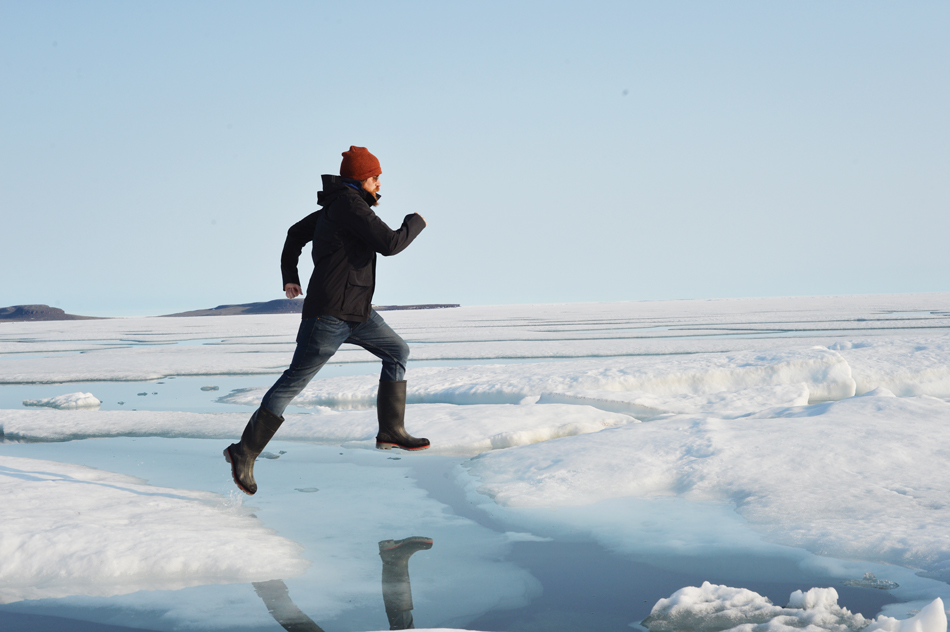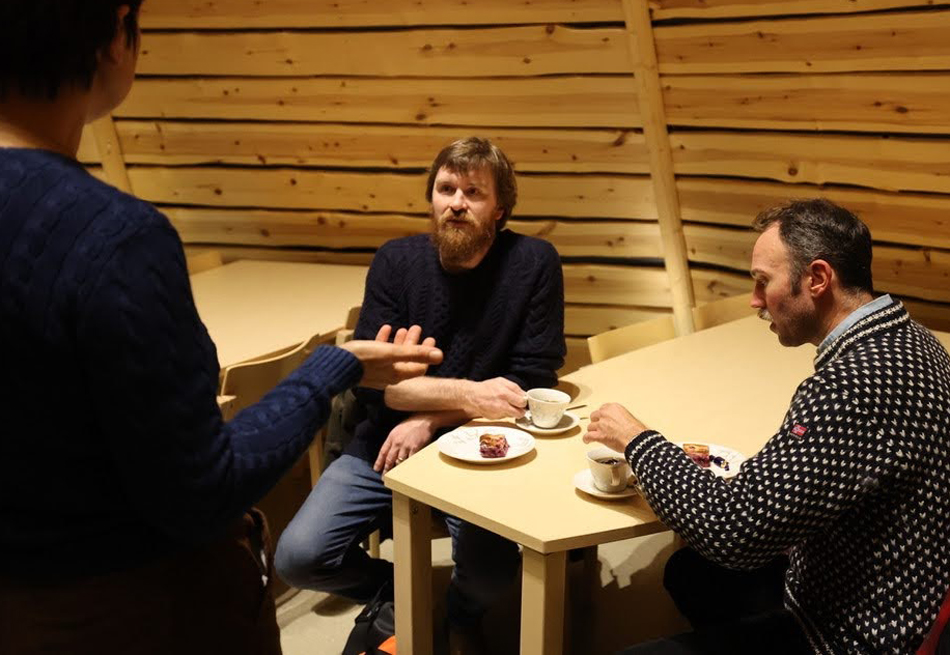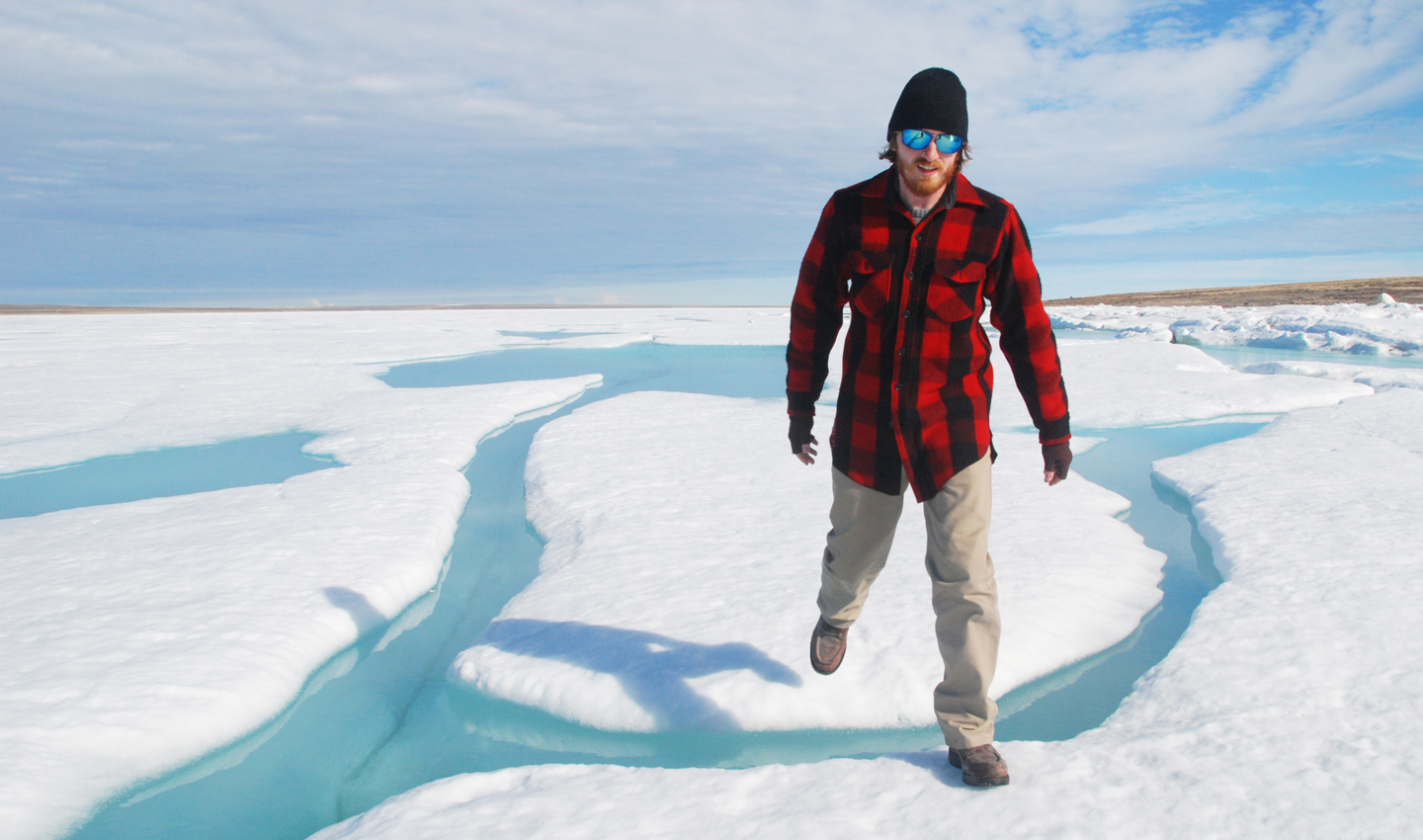Over the past six years as a senior research scientist with the iSchool's Technology and Social Change Group (TASCHA), Jason Young has done expansive and eclectic work. A short list of projects includes supporting Indigenous communities in the Arctic and Peruvian Amazon, advocating for library visibility in Africa, and collaborating with local rural librarians to develop interventions for misinformation. This agility as a researcher, as well as his reputation for collaborating with and uplifting others, are why, according to founder of TASCHA Chris Coward, Young was an obvious choice to replace him as director.
“Everyone at TASCHA pointed to Jason as the person who would be the best to lead it going forward,” said Coward.
Young joined TASCHA in 2017 after completing his Ph.D. in the Department of Geography at the University of Washington. He’s also an affiliate assistant professor at the Information School and at the Jackson School of International Studies as well as a research fellow with the Center for an Informed Public.
Young’s research sits at the intersection of technology, society and the environment. “The through-line for my work is using technology to work with Indigenous communities to highlight their knowledge and to empower that knowledge to have greater impact for them,” he said.

These interests grew out of what he describes as a fantastic research opportunity he experienced as an undergraduate: working with the Maijuna Indigenous people in Peru.
The Maijuna, who’ve lived in the Amazon for centuries, were subject to forced displacement by the Peruvian government. They were relegated to small sections of the Amazon, Young learned, and the rest of their ancestral lands were open for highway development, poaching and logging. Young, along with a team of ethnobotanists and environmental scientists, brought in mapping software to document the historical presence of the Maijuna, including their cultural sites and their vast knowledge of ecosystems that hadn’t been scientifically documented before.
“We were able to combine that Western, scientific knowledge with the Maijuna’s knowledge,” Young said, “and package it in this authoritative-feeling mapping system that the government recognized as scientific.” The Peruvian government then changed course and recognized the legitimacy of the knowledge and history of the Maijuna.
“It led to them being able to create this conservation area that they now control, which is about a million hectares, which is like three times the size of Yosemite National Park,” he said with excitement.
Young said the experience was a formative one. His research has since been guided by this interest in how historically marginalized populations can leverage technology to amplify and give credence to their knowledge. He’s also interested in how political forces determine whose knowledge is valued and given power. “Those remain a core interest of mine,” he said.

Another project Young is currently working on spans the circumpolar north — including Alaska, Canada, Finland, Iceland and Greenland — and explores how to use education to support Arctic Indigenous communities. During a workshop at the Sámi Education Institute in Finland, the Sámi people showed researchers videos documenting their practice of smoking fish, and an Alaska Native scholar, who’d never been to Finland, had a remarkable realization.
“She was like, ‘Wow, we do the exact same thing,’” said Young. “It was this really empowering moment, this connection across worlds.”
It led to a research proposal to work with international partners to create more moments like this, in which education and technologies can facilitate connection and knowledge exchange. Colonial forces have stripped Indigenous communities of their language, knowledge and cultural practices. Some communities have lost practices that others have held on to. And since travel in the Arctic is so difficult and expensive, small communities tend to be isolated from one another.
This case, Young said, illustrates the need for resources to support video making and sharing. If video capturing Indigenous knowledge can be shared across communities, lost practices can be recovered, and this can build resilience and increase wellness.
Such work requires a high degree of trust between researchers and communities. Young has developed expertise in practices that build trust and lead to positive outcomes for communities and researchers, said Chris Jowaisas, a senior researcher at TASCHA who has collaborated with Young on a number of projects. Among them is Co-Designing for Trust, a large multi-site study working with communities to create interventions for misinformation. It’s funded by a $5 million grant from the National Science Foundation.
Like Young’s work in the Amazon and the Arctic, Co-Designing for Trust is grounded in community-based participatory research methods, which emphasize collaboration between researchers and those affected by the research, recognize everyone’s knowledge and expertise, and empower everyone to be decision-makers.
Since misinformation is such a complex and challenging problem that afflicts different communities differently, there isn’t a one-size-fits-all solution, said Zoë Bermet, research project manager with the Center for an Informed Public, who’s also involved in the Co-Designing for Trust project. “It really has to come from the community. They are the ones that know how misinformation is targeting their community and how to best respond, how to best mobilize and educate within their own context,” she said.

Co-Designing for Trust brings together academic researchers, community organizers and researchers, librarians, and teachers, said Stacey Wedlake, research scientist with TASCHA. “Jason’s really able to work across those different contexts, and he strives to ensure that everyone’s voice and perspectives are embedded into the work and are valued,” she said.
The project originated from Young’s gut instinct that since extant approaches to information literacy training are focused on critical thinking and logic, they are missing a crucial component. “We need to address the emotion part,” he said, “because emotions can prevent us from wanting to use those logical and critical thinking skills.” So, Co-Designing for Trust combines academic expertise in information literacy and library science with the expertise and knowledge from rural and Black communities to investigate how misinformation shows up and what holistic interventions stand a chance at creating healthier information behaviors.
Communication and convergence across each moving part of this massive project is key, said Wedlake. “We’re trying to share ideas and make it so that these resources aren’t siloed after development and can instead be in conversation with each other.”
Young is adept at bringing people together in collaborative and ethical research partnerships, said Jowaisas. “I think that’s why he works with such a wide variety of people. He makes everybody around him better, and that’s one of the most effective things that a leader can do.”
The commitment to collaboration that informs his research is also what’s at the forefront of Young’s plans for TASCHA. As the new director, Young will focus on integrating the center further into the iSchool so that research scientists can work in community with faculty and students, sharing expertise and experience.
“There’s a real opportunity to come into TASCHA and have these exciting, critically minded conversations around research questions that resonate across the iSchool,” Young said.
He has plans, for example, to implement a research cluster initiative, in which faculty, students and research scientists can come together to have reading groups and conversations around research logistics and funding, ethical research partnerships, and methodologies and design. “It would provide a lot of opportunities for TASCHA researchers to teach and bring in examples from our research and our successes,” he said.
Young says he doesn’t want to radically change the identity of TASCHA. “We have a lot of strengths that I want to carry forward,” he said. “But I’m also excited and it’s really important to me that the future is collectively determined by everybody that is a part of TASCHA.”
